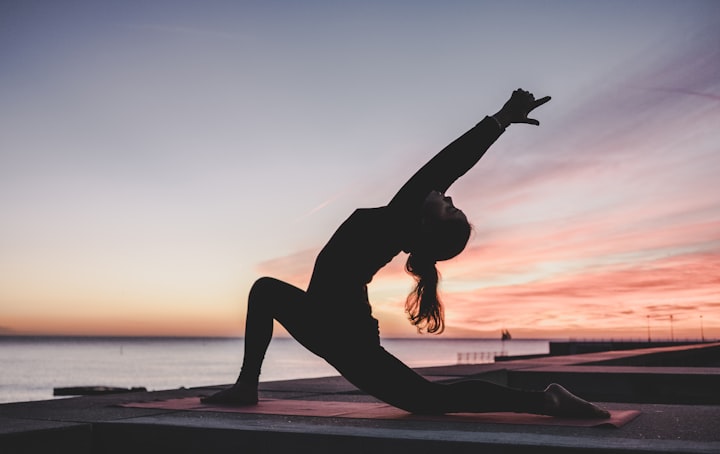10 Common Misconceptions Of Yoga You Probably Believed In Till Now
Physical, mental, and spiritual techniques to achieve a positive well-being.
For outsiders, yoga looks like a set of acrobatic exercises that challenges flexibility. It also comes with preconceived notions about religion and its participants. However, many of those yoga impressions are mere myths, and the truth is far simpler.
To start with, yoga is a discipline. It consists of a group of physical, mental, and spiritual techniques to achieve positive overall well-being.
Yoga originated in India. Some say it was birthed in 500 CE, while others claim it goes back 5,000 years. In the late 1890s, Indian monks brought yoga to the West where it became popular only in the 1980s. By 2018, some 28.7 million people in the U.S. were doing yoga. The figure is increasing every year.
But do people have an in-depth understanding of yoga? Not so much, as many still believe in the following misconceptions about it:
1. Yoga Belongs To A Religion
Farida Hamza, a Muslim woman, received a lot of flack when she decided to be a yoga teacher in the US. “They were very confused as to why I wanted to do it—that it might be going against Islam,” Hamza told BBC World Service.
Other religious leaders are also not on board when their congregants do yoga. There was even a time the state of Alabama banned yoga in schools. The ban has since been lifted, but students are not allowed to say “namaste,” a Hindu greeting.
The truth is, yoga is linked to Hinduism because of its origins. However, it does not belong to this religion. Physical movements are not religious. It’s just like the sign of the cross—anybody can do it, but it doesn’t automatically make them Catholics. Yoga is a human thing—something humans do to keep physically, mentally, emotionally, and spiritually healthy.
2. Yoga Is Only Bodily Postures Or A Form Of Exercise
Many people say that yoga is only a type of exercise as they see only the difficult poses. However, there is more to it than physical strength. The positions are supported by concentration and deep breathing because yoga is about connecting the body, mind, and spirit.
There are six branches of yoga, each focused on different aspects of a person’s well-being:
● Bhakti yoga - love and devotion
● Hatha yoga - physical practice to attain balance
● Jnana yoga - a direct path to insight or illumination—the path of knowing
● Karma yoga - selfless service
● Raja yoga - contemplation and meditation
● Tantra yoga - sensations and energies
When you understand these branches, you will also learn that exercise is just one part of yoga’s complex nature.
3. Yoga Can Be Learned Safely Through Books, Internet, Or Videos
Anyone can learn the physical aspects of yoga at home through YouTube videos or a very detailed New York Times article. However, since we now know that there is more to it than just physical stances, the best way to learn it is from a yogi or yoga teacher.
Enrolling with an expert will help you acquire the right techniques to grasp the poses, which can be difficult for beginners. A yogi or yoga instructor will also help you through meditation and breathing techniques. Once you’ve mastered the physical, mental, and spiritual aspects, you can continue doing it at home on your own.
4. Yoga Is For Flexible People And People With A Certain Body Type
The media has not been very inclusive when portraying yoga on screen or on paper. They always show women in tight yoga pants and tops showing off their taut tummies. Flexibility is learned, and it is not a natural characteristic of a specific body type.
In fact, “yoga is ideal for plus-size people,” said Anna Guest-Jelley of Curvy Yoga in US News, “it is low-impact, which is more comfortable than running for heavier people.”
5. Yoga Is Only For Young People, Old People, Or Women
Yoga does not recognize age or gender.
In fact, teenagers can start getting fit with yoga without focusing on their physical appearance. Adults benefit from a strength boost while also releasing the tension in their body, a perfect defense to the demands of everyday life. In seniors, yoga helps minimize hypertension and keep bones strong.
There is a notion that females are the flexible sex and men are the stronger sex. Hence, yoga is seen as a more feminine activity, with men constituting less than 20% of the yoga population. However, yoga also requires strength, which makes it suitable for all genders. Plus, it offers similar physical benefits to going to the gym, but with less aggression.
6. Yoga Cannot Be Done With A Bad Back Or Overweight Body
Enthusiasts respond: Yoga is for every body. Overweight people benefit from the weight loss effect of yoga. Compared to strenuous workouts a la The Biggest Loser, which are so tiring that one may lose motivation to continue, yoga is more relaxed. And you can always ask your instructor to modify the program to fit your capability.
Moreover, the mental and spiritual aspects of yoga help the overweight achieve a better mindset in their weight-loss program.
On the bad back issue, some yoga poses can actually aid with the discomfort. For example, Downward-Facing Dog, one of the most popular, can help relieve back pain. The Extended Triangle may alleviate sciatica and neck pain. Many more yoga postures are gentle and helpful to the back.
7. Yoga Is Not For Asthmatics
A study found that yoga was effective in reducing the number of attacks among asthmatic people. It also resulted in the reduction of the need for medication, which could be expensive.
Experts believe that yoga helps improve posture, thereby opening the chest muscles and encouraging better breathing. In addition, it includes a breathing technique that helps people deal with stress, a common asthma trigger.
8. Yoga Is Tough, Dangerous, And Physically Demanding
Yoga can be tough at first, but never dangerous. Advanced yoga is physically demanding, but it is a process. You do not do it when your body is not ready yet.
There are many health benefits to doing yoga:
● Improved strength
● Enhanced balance and flexibility
● Back pain relief
● Prevention or alleviation of health issues (arthritis, hypertension, heart problems)
● Better sleep
● Positive mood
● Efficient stress management
For beginners, yoga is difficult, but you tough it out for the above-mentioned benefits. Once you are comfortable with the basic asanas or poses, you can move up to intermediate yoga, which tests your balance and includes more body twisting. And then, you progress from there.
Do not be afraid to break your bones while doing the poses because yoga actually strengthens them. But it is also crucial to get the asanas right by learning the basics from yoga instructors.
9. Yoga Is Too Slow And Time-Consuming
There are over a dozen types of yoga. Most are slow-moving and strength-building. However, those who prefer fast yoga can choose to do ashtanga, a dynamic and flowing practice that builds internal heat. It encourages movement and focus while inducing a lot of sweat. The benefits include improved strength, purified nervous system, and relaxed mind.
Power yoga is even faster than ashtanga. This flowing style will get your heart rate pumping. It builds strength, too.
Regarding the issue of yoga being time-consuming—there should be no such thing when you are dealing with health improvement. Whether yoga or pumping iron, you must always set aside time for exercise. Besides, 12 to 20 minutes of yoga a day will sufficiently improve your well-being.
10. Yoga And Meditation Are Completely Different
Meditation is an essential part of yoga. After doing the poses, you meditate to achieve the union of the mind, body, and spirit.
Just as there are different asanas, there are also various meditations. One is sound meditation where you repeatedly utter a mantra. The most popular is visualization, a practice of closing your eyes and visualizing something to help you think deeply. Another is gazing, which means focusing on an object while thinking.
Yoga and meditation can be independent of each other. However, when you integrate the two, you will experience a better quality of life.
Conclusion
Yoga is already a mainstream fitness activity, yet myths about it are still aplenty. It has been referenced many times on screen and in various media collateral, but the picture is usually the same: slim women in tight and colorful clothing doing flexy poses.
Yoga improves one’s well-being, so it would be good to encourage more people to do it. Misconceptions, though, will discourage others to embrace its principles.
As yoga teacher Aadil Palkhivala said: “Yoga is not about the shape of your body, but the shape of your life. Yoga is not to be performed; yoga is to be lived.”
About the Creator
Keren Dinkin
| Qualified copywriter with seven years of work experience |
When I'm not at my desk whipping up compelling narratives and sipping on endless cups of coffee, you can find me curled up with a book!






Comments
There are no comments for this story
Be the first to respond and start the conversation.